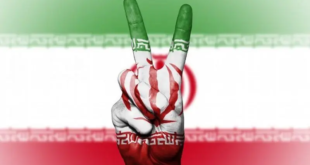The history of the Jewish State’s fight to prevent the Islamic Republic creating nuclear weapons.
2002
An Iranian opposition group, the National Council of Resistance of Iran, held a press conference and revealed the existence of an underground enrichment plant in Natanz. Built in a heavily fortified bunker, Natanz showed that the Iranians had learned from the mistakes of the Iraqis, whose Osirak reactor was located above ground and was destroyed by Israel in 1981.
The Mossad was suspected of having provided the Iranian opposition group with the information.
2007
Power supplies that were used to regulate voltage current at the Natanz enrichment plant blew up, destroying dozens of centrifuges.
2010
Stuxnet, a virus reportedly created by Israel and the United States, infiltrated Natanz and succeeded in destroying more than 1,000 centrifuges, causing significant delays to Iran’s nuclear program.
The Stuxnet code caused the engines in Iran’s IR-1 centrifuges to increase and decrease their speed. Iran usually ran its motors at 1,007 cycles per second to prevent damage, while Stuxnet seemed to increase the motor speed to 1,064 cycles per second, causing the engines to explode.
2020
An explosion destroyed an advanced centrifuge assembly facility at Natanz in August, setting back advanced centrifuge development by an estimated one to two years.
The explosion was meant to send an unambiguous deterrent message that Iran’s progress toward a nuclear weapon beyond certain redlines would not be tolerated, The Jerusalem Post reported.
March 2021
Iran started enriching uranium at its underground Natanz nuclear facility using the advanced IR-4 centrifuge, the UN International Atomic Energy Agency nuclear watchdog reported.
The development was a further breach of Tehran’s 2015 nuclear deal with the P5+1 major world powers and reflected its recovery from a blow suffered on July 2, 2020.
April 2021
An “accident” was reported Sunday morning at the Natanz electricity distribution network, Atomic Energy Organization of Iran spokesman Behrouz Kamalvandi told Iran’s semi-official Fars News Agency.
Based on reports, it seems the so-called accident was caused by a cyberattack, possibly by Israel.
Iran had restarted enrichment at the Natanz facility, the IAEA reported less than a month ago.
Last year, foreign sources blamed Israel for an alleged attack on the facility, which reportedly impacted Iran’s nuclear program significantly.
 Eurasia Press & News
Eurasia Press & News




